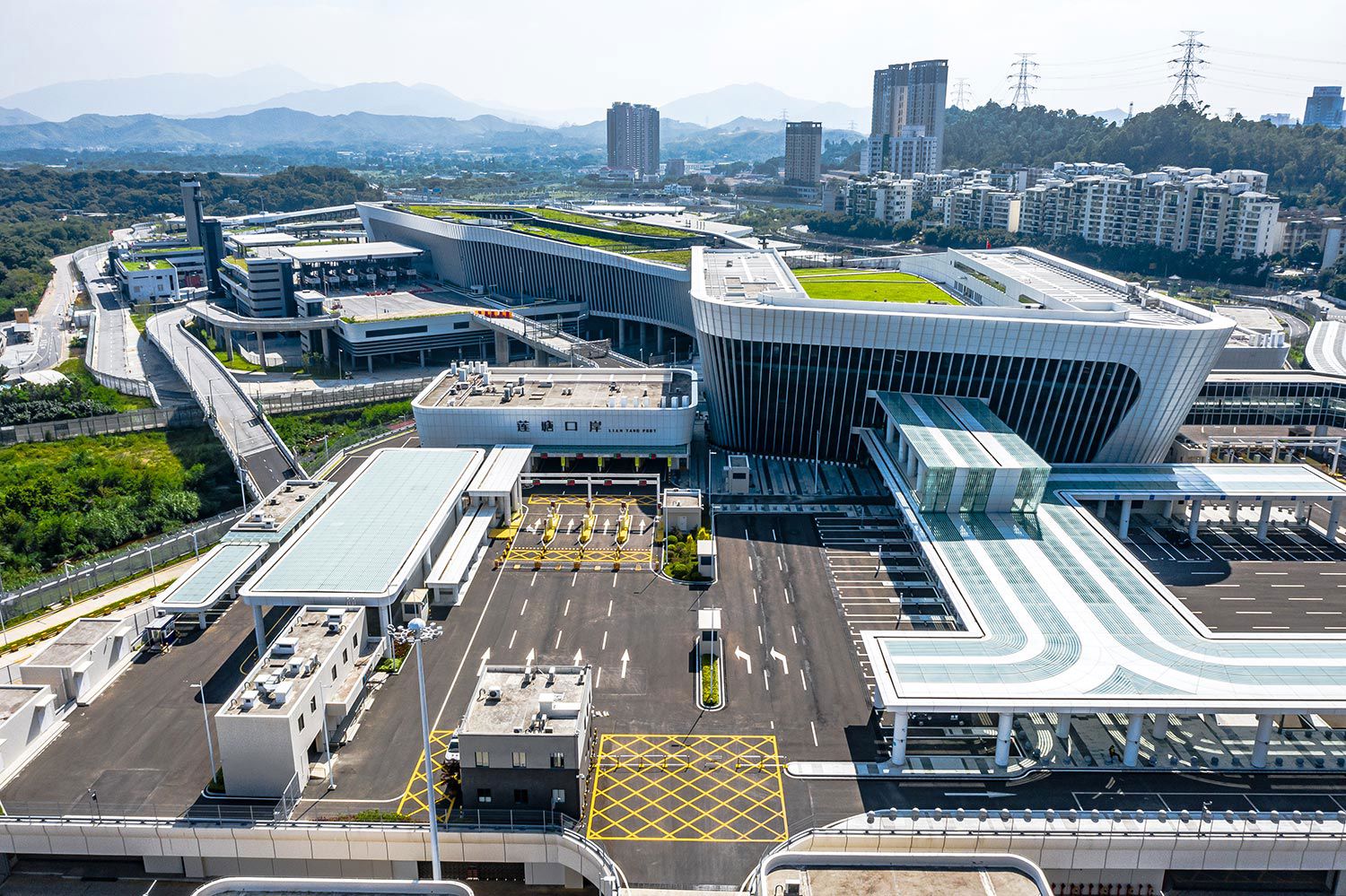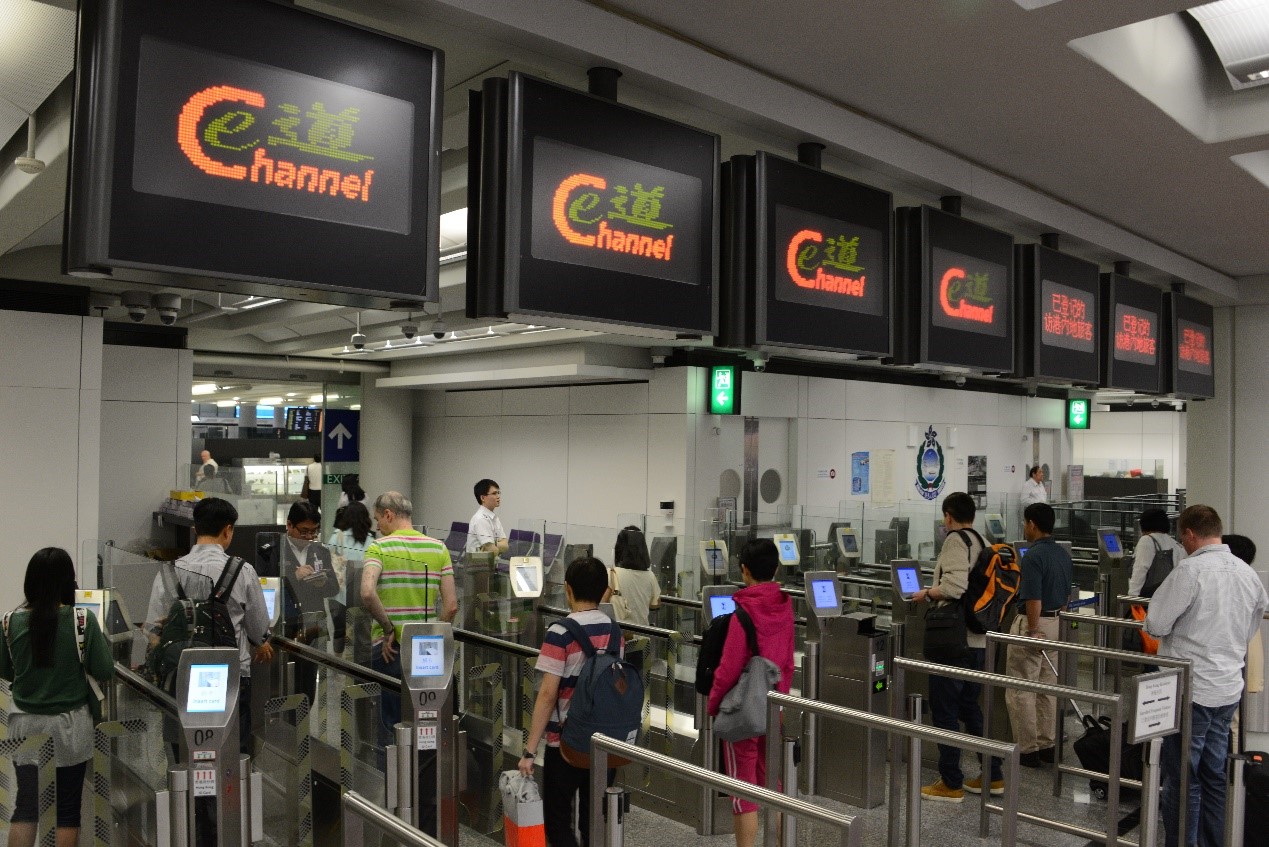
Development Focus
- To strengthen cooperation amongst departments of control points of the Mainland, Hong Kong and Macao, expand and improve the functions of control points.
- To adopt more convenient clearance modes at control points in Guangdong, Hong Kong and Macao in accordance with the law.
- To explore various clearance facilitation as well as other innovative automated clearance modes to facilitate the movement of personnels of the Greater Bay Area and enhance the clearance efficiency.
- To study simplified requirements for Hong Kong private cars travelling to the Mainland.

Hong Kong is a free port. Cross-boundary flow of people and cargo is facilitated by our excellent immigration clearance system and efficient customs clearance regime. The Government has implemented self-service clearance for travelers and various measures facilitating cargo customs clearance at boundary control points to enhance their capacity and the level of convenience.
The Customs and Excise Department (C&ED), Guangdong Sub-Administration of the General Administration of Customs of People's Republic of China (GACC) and Macao Customs Service signed a memorandum on the co-operative and mutual-assistance arrangements between GACC, C&ED and Macao Customs at Hong Kong-Zhuhai-Macao Bridge Ports (the Memorandum) on 13 November, 2018, laying down a foundation for the three-side cooperation in customs affairs on the Hong Kong-Zhuhai-Macao Bridge (HZMB).
The Memorandum covers the following major points, including the establishment of a liaison mechanism for the three customs administrations; extension of the Single E-lock Scheme, which is a speedy clearance programme currently in force at the boundary control points between Hong Kong and Shenzhen, to the Hong Kong and Zhuhai Ports of the HZMB; implementation of mutual-reference and recognition of inspection findings among the three customs administrations; and customs exchange and co-operation in investigation and law enforcement in different areas. The Memorandum also strengthens the tripartite partnership in customs affairs and will extend the scope of cooperation. It will also increase customs clearance efficiency for passenger and cargo movements and make anti-smuggling efforts effective.
Facilitating personnel exchange
- At present, there are around 700 multiple-purpose e-channels in 14 control points in Hong Kong. It enables flexible deployment of e-Channels for use by Hong Kong residents and visitors based on passenger flow.
- Around 60 per cent of electronic Exit-Entry Permit for Travelling to and from Hong Kong and Macao holders performed immigration clearance using multi-purpose e-Channels. E-Channels have replaced immigration counters as the main clearance mode for Mainland visitors travelling to Hong Kong.
- The Immigration Department launched the self-service departure for visitors to Hong Kong (Smart Departure) in October 2017. Smart Departure adopts face recognition technology for identity verification providing greater travel convenience for visitors.

E-Channels
Enhancing flow of goods
- Hong Kong exercises minimal licensing control on goods entering or leaving the territory. It does not levy any tariffs, value-added tax or sales tax. According to the 2018 World Economic Forum's Global Competitiveness Report, Hong Kong ranked the ninth worldwide for the indicator of "efficiency of clearance process".
- The Customs and Excise Department (C&ED) provides highly efficient services for cargo clearance and has been implementing a number of initiatives in collaboration with the Mainland Customs to benefit the trade, including:
- Single E-Lock Scheme: Through the use of electronic locks and global positioning system (GPS), the need for repeated inspections of the same consignment by the two Customs authorities during import or export has been minimised, thus facilitating the flow of goods. Since May 2019, the number of clearance points under the Scheme in Guangdong Province has been increased to 52, 43 of which cover all nine Mainland municipalities in the Greater Bay Area. Together with the 12 clearance points in Hong Kong, more than 624 route options are available to the trade; and
- Mutual Recognition Arrangement for Authorised Economic Operators (AEOs): Goods consigned by enterprises accredited as AEOs by the C&ED and/or the Mainland Customs enjoy customs clearance facilitation, such as reduced and prioritised customs clearance, from both authorities.


